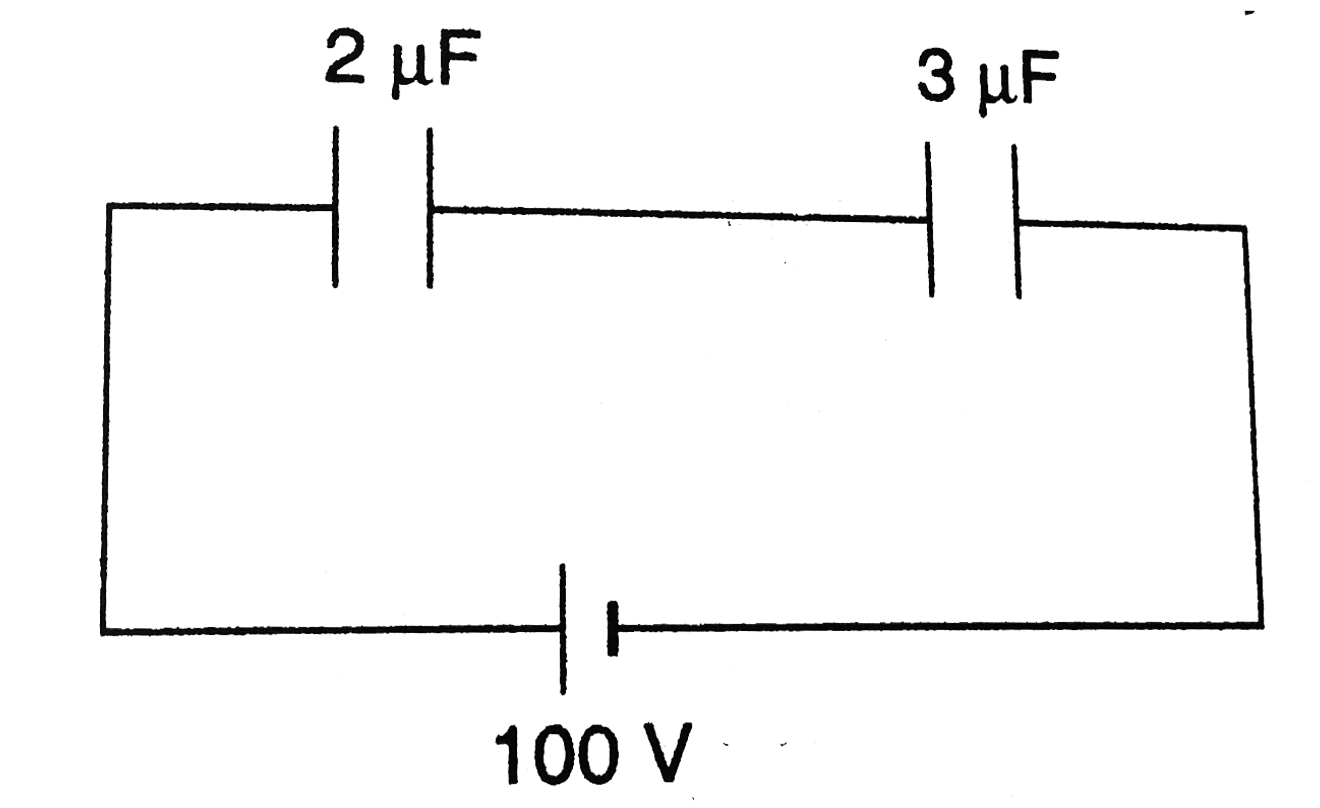Calculate the capacitance value if the electric charge is 80C and a potential difference is 4V?
22 F.
4.4 F
65 F.
20 F.
The correct Answer is:D
To calculate the capacitance value given the electric charge and potential difference, we can use the formula:
C=QV
where:
- C is the capacitance in Farads (F),
- Q is the electric charge in Coulombs (C),
- V is the potential difference in Volts (V).
1. Identify the given values:
- Electric charge Q=80C
- Potential difference V=4V
2. Substitute the values into the capacitance formula:
C=QV=80C4V
3. Perform the calculation:
C=804=20F
4. Conclusion:
The capacitance value is 20F.
Final Answer:
The capacitance value is 20 Farads.
---
- C is the capacitance in Farads (F),
- Q is the electric charge in Coulombs (C),
- V is the potential difference in Volts (V).
- Electric charge Q=80C
- Potential difference V=4V
C=QV=80C4V
C=804=20F
The capacitance value is 20F.
The capacitance value is 20 Farads.
Similar Questions
Find the energy stored in a capacitor of capacitance 100μF when it is charged to a potential difference of 20 V.
View SolutionTwo identical sheets of a metallic foil are separated by d and capacitance of the system is C and charged to a potential difference E. Keeping the charge constant, the separation is increased by 'l'. Then, the new capacitance and potential difference will be
View SolutionA parallel plate capacitor of capacitance C has been charged, so that the potential difference between its plates is V. Now, the plates of this capacitor are connected to another uncharged capacitor of capacitance 2C. Find the common potential acquired by the system and loss of energy.
View SolutionTwo capacitor of capacitance 2μFand3μF respectively are charged to potential difference 20 V each. Now the capacitors are connected such that the positively chargd plate of one capacitory is connected to the negatively charged plate of the other. after the current in the circuit has become negligible, the potential difference across the 2μF capacitor is ____V.
View SolutionA parallel plate capacitor of capacitance C is connected to a battery and is charged to a potential difference V. Another capacitor of capacitance 2C is ismilarly charged to a potential difference 2V. The charging battery is now disconnected and the capacitors are connected in parallel to each other in such a way that the poistive terminal of one is connected to the negative terminal of the other. The final energy of the configuration is
View SolutionIn the circuit shown in figure find

a. the equivalent capacitance
b. the charge stored in each capacitor and
c. the potential difference across each capacitor.
View SolutionTwo, capacitors A and B are connected in series across a 100V supply and it is observed that the potential difference across them are 60V and 40V. A capacitor of 2pF capacitance is now connected in parallel with A and the potential difference across B rises to 90V. Determine the capacitance of A and B
View SolutionA capacitor of capacitance C is initially charged to a potential difference of V volt. Now it is connected to a battery of 2V with oppoiste polarity. The ratio of heat generated to the final enegry stored in the capacitor will be
View SolutionCapacitor C3 in the circuit is variable capacitor (its capacitance can be varied). Graph is plotted between potential difference V1 (across capacitor C1) versus C3.
Electric potential V1 approaches on asymptote of 10 volts as C3→∞
The value of C3 for which potential difference across C1 will become 8V, is
View SolutionCapacitor C3 in the circuit is a variable capacitor (its capacitance can be varied). Graph is plotted between potential difference V1 (across capacitor C1) versus C3. Electric potential V1 approaches to 10 V as C3→∞. Given that C1+C2=10μF

The capacitance of the capacitor C1 value
View Solution